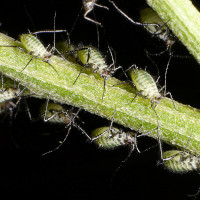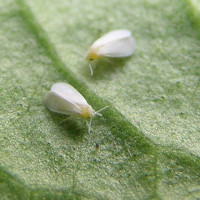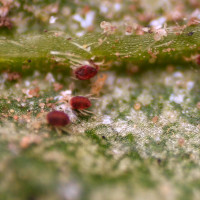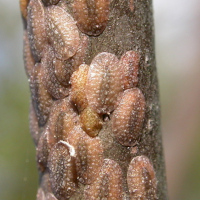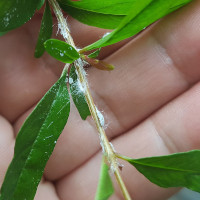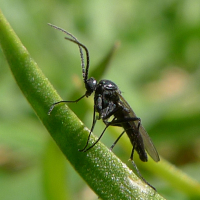“OMG! What happened?” I exclaimed as I looked sadly at the yellowing Juniper bonsai tree in front of me.
This is an all too common expression when our beloved indoor plants get sick and we don’t know why or what to do.
Sadly, my Juniper tree did not survive after an infestation of mealybugs.
We are going to teach you everything you need to know about indoor plant bugs and answer all your questions so you don’t suffer the same fate.
Questions like:
• What are the most common indoor plant bugs?
• How should I get rid of indoor plant bugs?
• Where do indoor plant bugs come from?
• How to prevent indoor plant bugs?
Bugs, pests, insects – technically different but to us much the same really. Houseplants, indoor plants, same same. We are going to use these terms interchangeably.
Let’s start with understanding what creepy, crawly pests are out there.
Common indoor plant bugs or houseplant pests
The indoor plant bugs listed below are some of the more typical ones that you will find indoors. Unfortunately, they don’t ring your door bell or announce their arrival, so you need to keep a look out for changes in your plant or weird looking fluffy spots, webs or droppings on your plants.
One of the first things you need to do when you find a nasty little critter or two, is to identify your houseplant pests. Once you know who has moved in, you stand a better chance of knowing how to treat the infestation.
Let’s have a look at what each of the common houseplant pests looks like.
Some of the same treatments can be used to deal with different types of indoor plant bugs. We have listed each treatment in detail under the various indoor plant bugs for your ease in identification and then treatment.
Click on the link out of the list of indoor plant bugs in the table below to go directly to that section, or read through each section in more detail.
Aphids
Aphids are one of the most commonly found indoor plant bugs. They are like the vampires of the plant world sucking the sap out of living plants. Therefore, they tend to prefer plants that are more ‘sappy’ or juicy and focus on areas of new plant growth, such as tips and flowers. Aphids are a bit sneaky, hiding from plain sight under plant leaves. Although a decent size colony will also extend onto stems and other areas of the plant. The reproduce quickly, so early detection and control is essential.
Unfortunately, once your indoor plant has a lot of Aphids it can be a downward spiral for your plant. The Aphid secretes a sweet and sticky substance from their rear. This attracts other pests and mould, like ants and sooty mould.
What do Aphids look like?

Aphids are six legged insects – typically green but can also be black or grey. They are easily seen with the human eye.
Treatments
Unlike some other indoor plant pests, Aphids are soft bodied. This means they can be squished – one way of controlling the infestation. Gross, I know! Alternatively, you can brush or push Aphids off the plant. Be careful to collect them in a bag or container held below the area you are working on, so they don’t drop onto other parts of the plant or into the soil.
If squishing indoor plant bugs makes you feel a bit queasy, that’s ok. There are other natural ways to treat an Aphid infestation.
Water pressure
If you have an outdoor space, or an indoor sink with a good pressure flexible tap fitting, you can use water pressure to ‘blast’ the Aphids off the plant. By blast, I mean gently. Cover the soil of you plant or slip the pot into a plastic bag and tie the handles around the stem. Use the water pressure to systematically flush the Aphids from all areas of the plant, paying particular attention to the undersides of all the leaves. Be careful not to break or bruise parts of your plant.
You may need to repeat daily until the Aphids have disappeared.
Warm soapy water
Fill a spray bottle with warm water and a small amount of washing up liquid (about 1 teaspoon to 1 litre of water). You want the same strength and consistency as when you wash the dishes. Shake well. Cover the soil of you plant or slip the pot into a plastic bag and tie the handles around the stem. Spray this solution all over your plant. The aim is to cover the Aphids with this solution, so you will need to focus on the underside of the leaves and other areas where they are living. The Aphids must be covered in the solution for it to work.
Wait 5 minutes and then wash off the soapy solution.
If some of the solution gets into the soil, don’t worry too much. Just water the plant to flush as much of the solution away as possible.
You may need to repeat this treatment in another week or two until the Aphids have disappeared.
Essential oils
Create your own spray mixture using essential oils. Place 5 drops of each of the following: peppermint, clove, rosemary and thyme. Mix with warm water in a 500ml spray bottle. Again, spray this solution all over your plant. The aim is to cover the Aphids with this solution, so you will need to focus on the underside of the leaves and other areas where they are living.
You may need to repeat this treatment in another week or two until the aphids have disappeared.
Neem oil
Neem oil acts as a repellent for Aphids and other bugs, including mealybugs, ants and caterpillars. Some neem oil products require diluting. Follow any instructions on the manufacturer’s packaging or use a ready-to-use neem oil spray. Spray all affected areas.
You may need to repeat this treatment in another week or two until the Aphids have disappeared.
Chemical
If you need something a little stronger, we would recommend that you consult with your local garden center. Many of the chemical solutions need to be treated with caution because of their potential impact in the indoor environment.
Common whitefly
Are you greeted with a swarm of white insects when you water or disturb your plant? You most likely have an infestation of whitefly. Although these indoor plant bugs look like tiny white flies or moths, they too suck the sap out of plants and are a relative of the aphid and mealybug.
Whitefly reproduce rapidly. They lay their eggs on the underside of the leaves. Both the adults and nymphs (baby) feed on the juicier parts of your plant. These include new growth, buds and leaves.
Like aphids, a whitefly party can be the start of a downward spiral for your plant. They also secrete a sweet and sticky substance from their rear. This attracts other pests and mould, like ants and sooty mould.
Unlike Aphids, Whitefly are obviously mobile and can also spread viruses from plant to plant as they move between plants to feed.
What do whitefly look like?
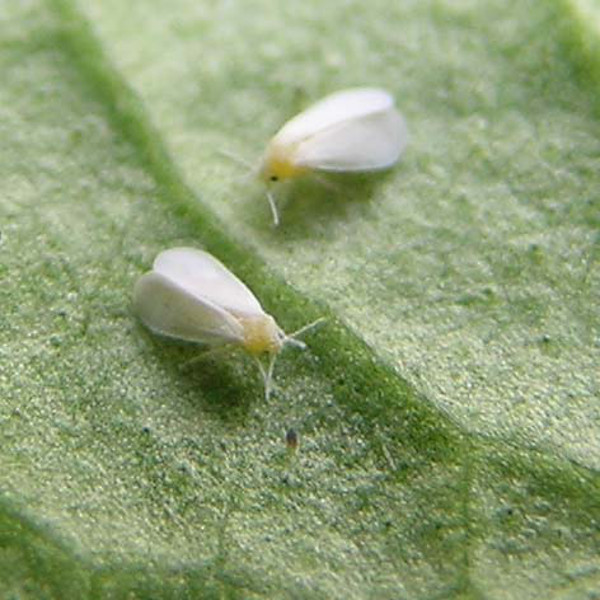
The common whitefly is typically white with a yellowish head. Their eggs, which are laid on the underside of plant leaves, look like tiny green or grey/black spherical eggs laid in lines. Both the whitefly and their eggs are easily seen with the human eye.
Treatments
Yellow Sticky traps
Whitefly are attracted to the color yellow. One of the best ways to catch them is to hang yellow sticky traps close to your plant. Sticky traps can be purchased from garden centers.
You can even make your own. Get stiff bright yellow cardboard or paper (preferably laminated or water resistant). Make a hole or two in the cardboard and attach string so you can hang your artwork. Then smear the cardboard with vasoline and hang near the plant. Make sure you jiggle and disturb the affected plants regularly to encourage the whitefly to swarm and fly into the traps.
Water pressure
If you have an outdoor space, or an indoor sink with a good pressure flexible tap fitting, you can use water pressure to ‘blast’ the whitefly off the plant. By blast, I mean gently. Cover the soil of your plant or slip the pot into a plastic bag and tie the handles around the stem. Use the water pressure to systematically flush the whitefly and their eggs from all areas of the plant, paying particular attention to the undersides of all the leaves. Be careful not to break or bruise parts of your plant.
You may need to repeat daily until you have broken the reproductive cycle and the Whitefly have disappeared.
Vacuum
It’s going to sound a little strange but you can treat whitefly infestations by vacuuming. Cover the soil of you plant or slip the pot into a plastic bag and tie the handles around the stem. Get your vacuum cleaner out, set it on a low suction setting (if possible). Vacuum as many of the whitefly and their eggs off your plant. Make sure you pay attention to the underside of the leaves. Be careful not to bruise or break parts of your plant.
Lastly, carefully empty the contents of the dust bag into a plastic bag and freeze. Yep, strange, but it makes sure that the whitefly are dead before disposal. Make sure you label the bag in the freezer, we don’t want any nasty culinary accidents!
Soapy water and natural sprays
You can deter whitefly with a homemade natural spray made from dishwashing liquid, essential oils and/or chilli and garlic.
Fill a spray bottle with warm water and a small amount of washing up liquid (about 1 teaspoon to 1 litre of water). You want the same strength and consistency as when you wash the dishes. Shake well. Cover the soil of your plant or slip the pot into a plastic bag and tie the handles around the stem. Spray this solution all over your plant. The reality is that as soon as you start spraying the whitefly will start swarming so you may not cover them with the solution. The aim, however, is to cover the whitefly nymphs and eggs with this solution, so you will need to focus on the underside of the leaves. The nymphs and eggs must be covered in the solution for it to work.
Wait 5 minutes and then wash off the soapy solution.
If some of the solution gets into the soil, don’t worry too much. Just water the plant to flush as much of the solution away as possible.
You may need to repeat this treatment every couple of days to break the reproductive cycle.
Alternatively, you can use the same essential oil solution as for Aphids.
Or make a spray containing chili and garlic mixed into a small spray bottle. Add half a teaspoon each of chili and garlic into 500ml of warm water. Shake well. Spray the plant regularly, particularly the undersides of the leaves.
Red spider mites
Red spider mites are technically not insects. Nor, are they technically spiders. They are mites with 8 legs and the ability to spin webs.
Regardless of their name and zoological family, they are one of the most feared common household pests. This is because they are very contagious – swinging from plant to plant on webs in the breeze. And, they are known to be difficult to treat and get rid of.
Individual red spider mites are generally too small to be seen with the naked eye. More often, your plant will have a reddish film or residue on the underside of its leaves. This will be millions of red spider mites. You might also be able to see some visible webbing. If you want to get up close and personal, you will need a magnifying lense to see them.
They enjoy a dry environment.
What do red spider mites look like?
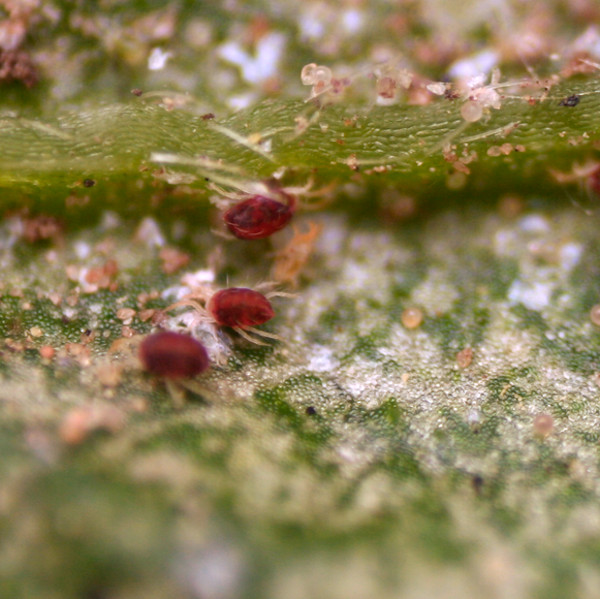
Reddish brown in colour. They have 8 legs and spin webs around parts of your plant.
Treatments
Water pressure
If you have an outdoor space, or an indoor sink with a good pressure flexible tap fitting, you can use water pressure to ‘blast’ the whitefly off the plant. By blast, I mean gently. Cover the soil of your plant or slip the pot into a plastic bag and tie the handles around the stem. Use the water pressure to systematically flush the red spider mites and their webs from all areas of the plant, paying particular attention to the undersides of all the leaves. Be careful not to break or bruise parts of your plant.
You may need to repeat daily until the red spider mites have disappeared.
Misting and wiping
The aim here is to create a moist environment that will make the red spider mites disappear. Mist your plant daily using a spray bottle filled with water.
Alternatively, for smaller infestations, you can wipe the affected parts of the plant with a soft damp cloth.
You will need to repeat both misting or spraying daily until the red spider mites have disappeared.
Soapy water with garlic and chili sprays
You can treat red spider mites with a homemade natural spray made from dishwashing, chili and garlic.
Fill a spray bottle with warm water and a small amount of washing up liquid (about 1 teaspoon to 1 litre of water). You want the same strength and consistency as when you wash the dishes. Add half a teaspoon each of chili powder and crushed or powdered garlic. Shake well. Cover the soil of you plant or slip the pot into a plastic bag and tie the handles around the stem. Spray this solution all over your plant. The aim is to cover the red spider mites and their webs with this solution, so you will need to focus on the underside of the leaves.
Wait 5 minutes and then wash off the solution.
If some of the solution gets into the soil, don’t worry too much. Just water the plant to flush as much of the solution away as possible.
You will need to repeat this treatment every couple of days until the red spider mites have disappeared.
Chemical
If you need something a little stronger, we would recommend that you consult with your local garden center. There are commercially available ‘mite’ killer products. However, we recommend the more natural solutions first because many of the chemical solutions need to be treated with caution particularly in the indoor environment.
Scale insects
Scale insects are like the barnacles of the plant world. The indoor plant bugs have a brown hard outer shell (the scale) and they clamp themselves on parts of your plant.
It can be tricky to see scale insects because even up close they can look like a natural blemish of the plant. Look closely at the underside of your plant leaves and on the stems, you may notice small round or oblong brown discs.
Like aphids, they secrete a sweet and sticky substance from their rear. This is often the first sign that scale insects have moved in. Unfortunately, this also attracts other pests and mould, like ants and sooty mould.
What do scale insects look like?
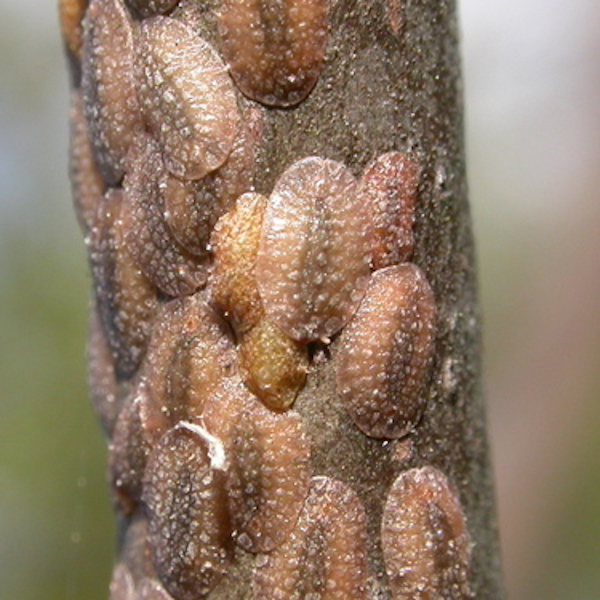
Generally, they are quite inconspicuous and don’t even look like insects. Look for small, scale like nubs on the underside of leaves and clumps of these nubs on stems. They can be brown, yellow, or amber.
Treatments
Firstly, the good news, scale insects don’t move so they are somewhat easier to treat than those indoor plant bugs that fly and crawl.
Now for some bad news. Their scale protects them from many natural treatments. For any treatment to be effective, you firstly need to get around the scale. In many cases, this means that you will need to treat your plant a number of times before the scale insects disappear.
Like Aphids, an effective way to treat smaller infestations is to simply brush or push the scales off the plant. Be careful to collect them in a bag or container held below the area you are working on, so they don’t drop onto other parts of the plant or into the soil.
If squishing indoor plant bugs makes you feel a bit queasy, that’s ok. There are other natural ways to treat scale insects.
Soapy water
Fill a spray bottle with warm water and a small amount of washing up liquid (about 1 teaspoon to 1 litre of water). You want the same strength and consistency as when you wash the dishes. Shake well. Cover the soil of your plant or slip the pot into a plastic bag and tie the handles around the stem. Spray this solution all over your plant. The aim is to cover the scale insects with this solution, so you will need to focus on the underside of the leaves and other areas where they are living. If possible, you need to get underneath the scale so a moderate soaking is a must.
Wait 5 minutes and then wash off the soapy solution.
If some of the solution gets into the soil, don’t worry too much. Just water the plant to flush as much of the solution away as possible.
This solution softens the scales. Follow the treatment, by wiping the affected areas with a damp cloth to remove the scale insects.
You will need to repeat this treatment in another week or two until the scale insects have disappeared.
Alcohol
While you might want to take up a glass of wine or whiskey at this point to drown your indoor gardening sorrows, this is not the type of alcohol I am talking about.
Apply rubbing alcohol (with a 70% or less solution of isopropyl) directly onto the scale insects using cotton swabs or buds. Try not to get too much of the alcohol on the actual plant.
You will need to repeat this treatment in another week or two until the scale insects have disappeared.
Chemical
If you need something a little stronger, we would recommend that you consult with your local garden center. There are commercially available products such as permethrin. However, we recommend the more natural solutions first because many of the chemical solutions need to be treated with caution particularly in the indoor environment.
Mealybugs
If Aphids are the vampires and scale insects are the barnacles, then mealybugs are the clowns of the plant world. These pests look like they are wearing a furry white outfit.
Mealybugs are related to scale insects and cause damage by sucking the sap from your plant. However, unlike scale insects they do not have a protective scale making them easier to treat. They typically clump together on parts of your plant. They can hide in the joins between stems and leaves, in the folds of foliage and even in new growth that has not yet unfurled.
These pests are more mobile than other indoor plant bugs though and can crawl from plant to plant if the plants are touching.
Like other indoor plant bugs, the mealybug secretes a sweet sticky residue which attracts other insects and problems.
What do mealybugs look like?
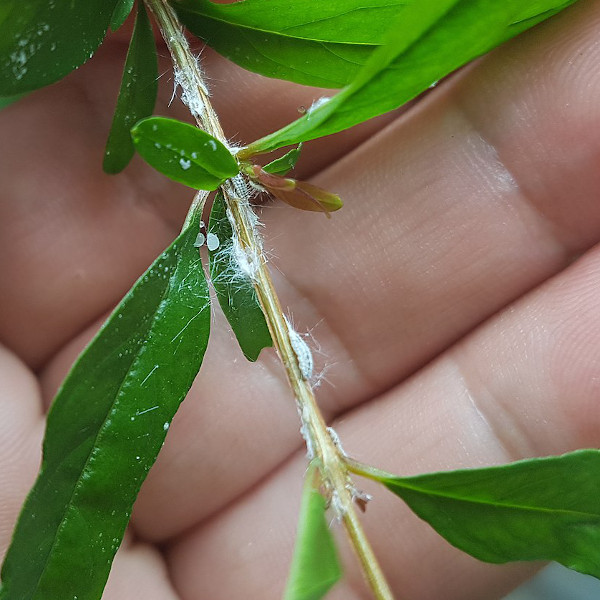
Cottony white bugs. They are able to be seen with the naked eye.
Treatments
Mealybugs are good at hiding and getting into tiny spaces. When treating your plant, you will need to have a look under every leaf, check around the stem of the plant where it comes out of the soil and check over the entire pot as well.
Quarantine
The first thing to do is quarantine the affected plant. Move it to a position away from any other plants so that you can prevent mealybugs from infesting any of your other indoor plants.
Alcohol
Apply rubbing alcohol (with a 70% or less solution of isopropyl) directly onto the mealybugs using cotton swabs or buds. Try not to get too much of the alcohol on the actual plant.
You will need to repeat this treatment in another week or two until the mealybugs have disappeared.
Warm soapy water
Fill a spray bottle with warm water and a small amount of washing up liquid (about 1 teaspoon to 1 litre of water). You want the same strength and consistency as when you wash the dishes. Shake well. Cover the soil of your plant or slip the pot into a plastic bag and tie the handles around the stem. Spray this solution all over your plant. The aim is to cover the mealybugs with this solution, so you will need to focus on the underside of the leaves and other areas where they are living. The mealybugs must be covered in the solution for it to work.
Wait 5 minutes and then wash off the soapy solution.
If some of the solution gets into the soil, don’t worry too much. Just water the plant to flush as much of the solution away as possible.
You may need to repeat this treatment in another week or two until the mealybugs have disappeared.
Neem oil
Neem oil can be used for mealybug infestations. Some neem oil products require diluting, others don’t. Follow any instructions on the manufacturer’s packaging or use a ready-to-use neem oil spray. Spray all affected areas.
You may need to repeat this treatment in another week or two until the mealybugs have disappeared.
Chemical
If you need something a little stronger, we would recommend that you consult with your local garden center. Many of the chemical solutions need to be treated with caution because of their potential impact in the indoor environment.
Fungus gnats
Fungus gnats are small, fruit fly sized, flying insects. They are attracted to the moisture in soil and lay their eggs near the soil surface. Often mistaken for fruit fly, the flying adults are more of an annoyance than anything. Fungus gnats are harmless to humans and pets since they can’t bite and don’t spread any diseases. But their larvae feed on the roots of plants and can be destructive.
What do fungus gnats look like?
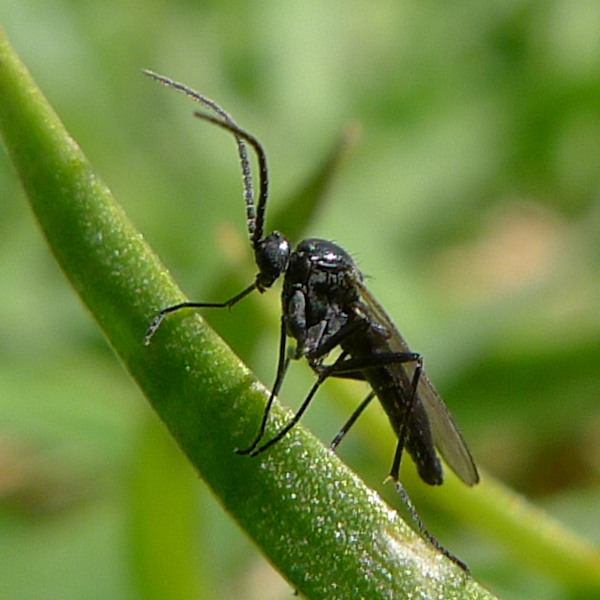
Small fruit fly sized, flying insects that swarm near the soil of your plant or around the drainage holes of your pot. They have long legs and long antennae, almost like a mosquito, but much smaller.
Treatments
Yellow Sticky traps
Like whitefly, fungus gnats are attracted to the color yellow. One of the best ways to catch them is to place yellow sticky traps close to the soil of your plant. Sticky traps can be purchased from garden centers.
You can even make your own. Get stiff bright yellow cardboard or paper (preferably laminated or water resistant). Make a hole or two in the cardboard and attach string so you can hang your artwork or weave the cardboard onto stakes. Then smear the cardboard with vasoline and place near the soil of your plant (hanging or attached to stakes positioned in the soil).
Natural bacteria
With fungus gnats, you can also introduce some safe bacteria – bacillus thuringiensis. In dry form, you can sprinkle this on the soil. Consult with your local garden center on products available and follow any instructions on the packaging.
How to get rid of houseplant pests?
For each type of common indoor plant pest, we have outlined a number of treatment approaches. We recommend you try natural approaches first before turning to any chemical treatments. If you eventually decide to use chemical treatments, consult with your local garden center and follow any instructions on the packaging. Be mindful that you are introducing chemicals into a home environment and check the advice on the product’s safety for children and animals.
Most indoor plant bugs are somewhat tough to get rid of. Often the best approach is a combination of treatments and plain old sustained effort. Spraying your plant once, forgetting to reapply the treatment and expecting the bugs to disappear simply won’t work.
Essentially, you have to treat the infestation and stop the reproductive cycle to be effective in your efforts so it can take a couple of weeks or months.
Sadly, heavy infestations may be too expensive or too far progressed to treat. In this case, you will need to discard the plant in the trash. Do not place your plant in any form of green waste bin as this may lead to more outbreaks and continue the cycle.
Where do indoor plant bugs come from?
When indoor houseplant pests arrive as unwelcome guests, it is often hard to understand where these pests have come from. Understanding some of the more common ways that these creepy, crawling, wiggling or flying bugs get in will help you prevent infestations.
New plants
Most garden centers are extremely vigilant at inspecting their stock for signs of pest infestations. But occasionally, a new plant can introduce houseplant pests into your environment. Inspect any new plants very carefully. Some people isolate their new plants until they are confident there are no pests hiding within.
Fresh produce
Fresh produce from markets, supermarkets or your own garden can inadvertently carry bugs into your home. Inspect fresh produce carefully.
Open doors and windows
Small, especially flying or drifting bugs, like spider mites or fungus gnats, can easily come through open doors and windows (even with screens on them). Other than living with the doors and windows closed, there really isn’t a good way to combat this.
Potting mix
Fungus gnats can be introduced via potting mixes. Store any leftover potting mixes in airtight containers or bags.
Flowers
Fresh flowers from markets, florists, supermarkets or your own garden can inadvertently carry bugs into your home. Inspect fresh flowers carefully.
Ants
Turns out the humble ant likes a party and to invite guests! Ants have been known to bring pests like aphids, scale and mealybugs to a houseplant. They like the sweet sticky residue that these pests produce. Keep a check on ants in your home.
Natural predators
Most common houseplant pests have natural predators such as ladybird beetles and lacewings.
In an outdoor setting, it is easier to encourage natural predators by planting companion plants that attract these natural predators or by introducing them. However, this is not really an option for the indoor environment. There is just not enough food in your home to sustain natural predators and these may in turn become a problem.
Is there is an opportunity to place your plant outdoors where the conditions are similar to the indoor environment? If so, you can try placing your plant outside where natural predators will eventually come and rid the plant of its pests. Be careful, not to shock your plant with either too much or too little light and remember to water as normal.
How to prevent indoor plant bugs?
The best way to deal with unwanted houseplant pests is to prevent infestations. We have read about how to prevent the introduction of indoor plant bugs into the home, but there are also some preventative measures that will ensure you plant stays healthy.
Proper care
Keep your indoor plants in top condition so they are healthy and can stave off any pests or diseases – watering, fertilizing, repotting, etc.
Soil and pots
Check your pots and soil regularly for any signs of pests. If you are repotting, make sure that the new pot is cleaned thoroughly with soapy water or a weak bleach solution. Potting mixes should be kept into airtight containers.
Frequent inspection
Inspect your plant, its soil and its pot regularly. Dealing with small infestations or problems is easier than dealing with an all-encompassing outbreak.
Conclusion
So, what happened to my juniper? Long story, but here is the short version. I went on holidays leaving one of my family members to look after my bonsai collection. When I returned, I found out that my Juniper tree had suffered from a tribe of mealybugs. My family member had sprayed the Juniper with White Oil, a commonly used cure for mealybugs. Unfortunately, the white oil suffocated the Juniper tree and it didn’t survive.
Your indoor plants need not suffer the same consequences.
Remember, with indoor plant bugs, prevention is better than cure.
Don’t forget to get to know your plants and their needs. A little time invested in reading about your plants can be fun, relaxing and bring great results. Your plants will return your love and care by contributing to the health and wellbeing of your indoor space and providing oxygen.
Remember, life is better with indoor plants!


